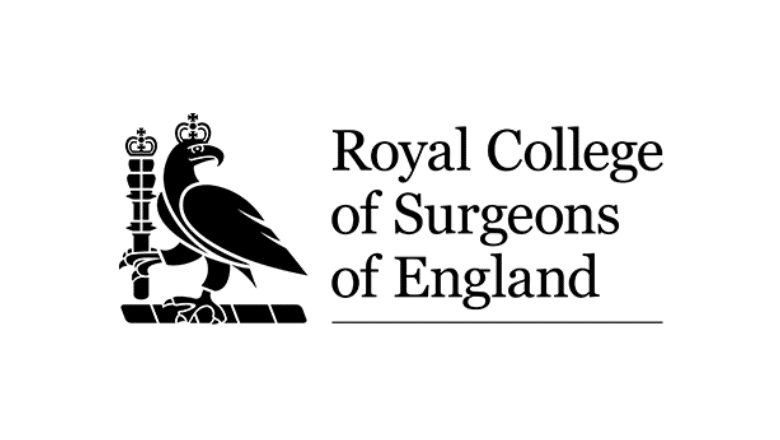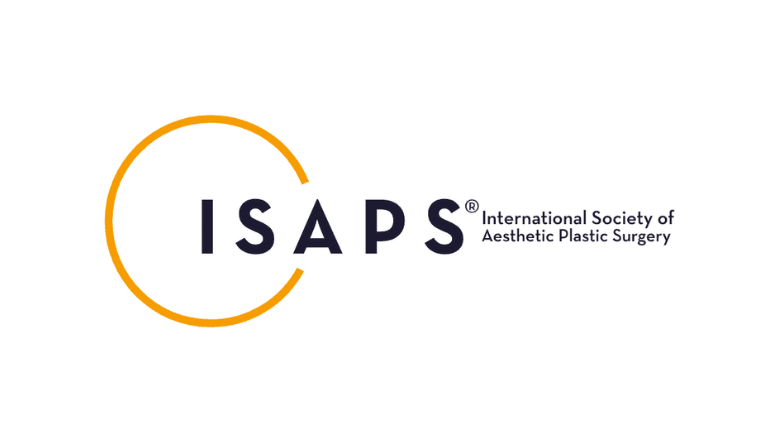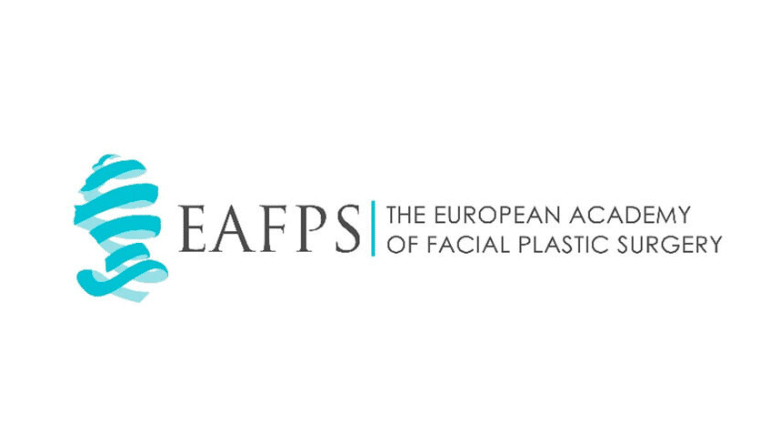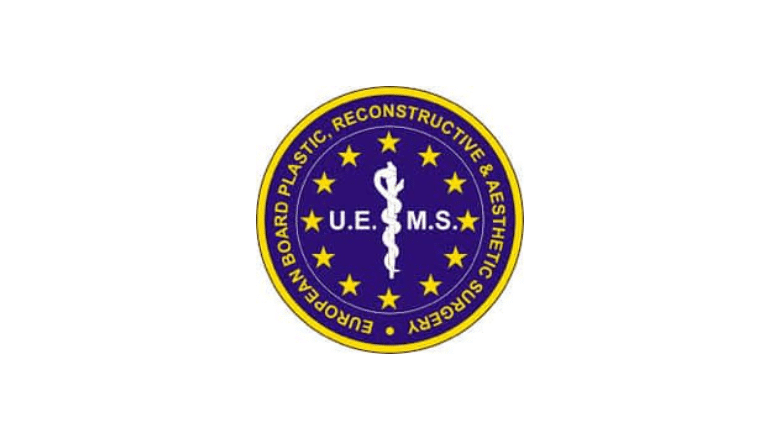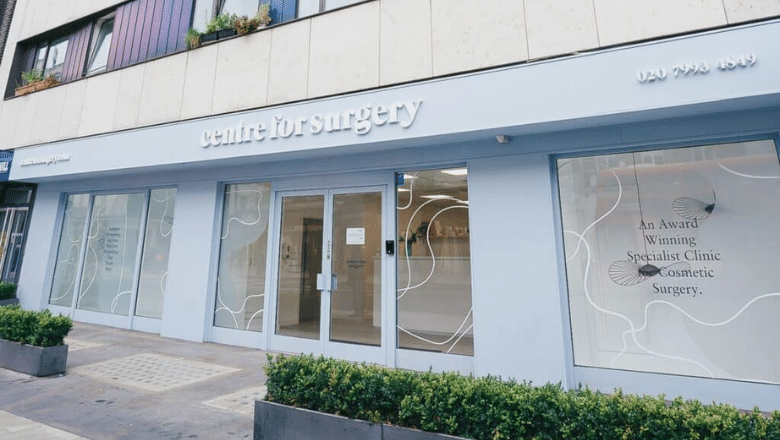-
PROCEDURES
-
NOSE SURGERY
- Rhinoplasty (Nose Job)
- Tip Rhinoplasty (Tip Plasty)
- Alar Base Reduction (Alarplasty)
- Septoplasty
- Turbinate Reduction
- Septorhinoplasty
- Ethnic Rhinoplasty
- Ultrasonic Rhinoplasty
- Preservation Rhinoplasty
- Revision Rhinoplasty
- Male Rhinoplasty (Nose Job for Men)
- One Stitch Nose Lift
- Nose Surgery FAQs
- Rhinoplasty Gallery
- Non Surgical Rhinoplasty
- Rhinophyma Surgery
- Laser Snoring Treatment (NightLase)
-
EYELIDS & FOREHEAD
- Blepharoplasty (Eyelid Surgery)
- Upper Eyelid Surgery
- Lower Eyelid Surgery
- Canthoplasty (Almond Eye Surgery)
- Asian Blepharoplasty (Double Eyelid Surgery)
- Revision Blepharoplasty
- Male Eyelid Surgery (Blepharoplasty for Men)
- Eyelid Surgery FAQs
- Blepharoplasty Gallery
- Tear Trough Filler (Under Eye Filler)
- SmoothEye Laser Treatment
- AccuTite
- Micro & Nano Fat Grafting
- Brow Lift (Forehead Lift)
- Endoscopic Brow Lift
- Temporal Brow Lift (Lateral Brow Lift)
- Hairline Lowering Surgery
- Forehead Contouring Surgery
- Osteoma Removal
-
FACE SURGERY
- Full Facelift & Neck Lift
- SMAS Facelift
- Deep Plane Facelift
- Mid Facelift (Cheek Lift)
- Lower Facelift (Jowl Lift)
- Mini Facelift
- One Stitch Facelift
- Revision Facelift
- Male Facelift
- Neck Lift
- Mini Neck Lift
- Male Neck Lift
- Facial Fat Transfer
- Chin & Neck Liposuction
- FaceTite
- Lip Lift
- Lip Reduction Surgery
- Dimple Creation (Dimpleplasty)
- Buccal Fat Removal
- Chin Surgery (Genioplasty)
- Chin Augmentation
- Chin Reduction
- Male Chin Surgery
- EAR SURGERY
-
BREAST SURGERY
- Breast Augmentation with Implants
- Mini Boob Job (Mini Breast Augmentation)
- Breast Implant Options
- Breast Implant Check
- Breast Implant Removal (Explant)
- Breast Implant Removal & Breast Lift
- Breast Implant Replacement
- Breast Implant Revision
- Fat Transfer Breast Augmentation
- Hybrid Breast Augmentation
- Breast Lift (Mastopexy)
- Breast Lift with Implants
- Breast Lift with Auto-Augmentation
- Mini Breast Lift (Doughnut Mastopexy)
- Breast Reduction
- Liposuction Breast Reduction
- Inverted Nipple Correction
- Nipple Reduction
- Areola Reduction
- Breast Asymmetry Correction
- Tuberous Breast Correction
- Male Breast Reduction
- Gynecomastia Surgery
- Pectoral Implants
- Chest Wall Implants
- Pectus Excavatum Implant
- Poland Syndrome Implant
-
BODY SURGERY
- Ultrasound Assisted Liposuction
- Argo Plasma Skin Tightening
- BodyTite
- Liposuction
- Stomach Liposuction (Tummy Lipo)
- 360 Liposuction
- Micro Liposuction (MicroLipo)
- Tummy Tuck (Abdominoplasty)
- Brazilian Tummy Tuck (Lipoabdominoplasty)
- Mini Tummy Tuck
- Umbilicoplasty (Belly Button Surgery)
- Mons Lift (Monsplasty)
- C Section Scar Revision
- Body Contouring Procedures
- Fat Transfer (Fat Grafting)
- Mummy Makeover
- Calf Augmentation with Implants
- Fat Transfer Calf Augmentation
-
BUTTOCK CONTOURING
- Brazilian Butt Lift (BBL Surgery)
- Skinny BBL
- Ultrasound Guided BBL
- 360 Lipo and BBL
- Mini BBL
- Revision BBL
- Male BBL (Brazilian Butt Lift for Men)
- Brazilian Butt Lift FAQs
- Brazilian Butt Lift (BBL) Photos
- BBL Recovery Guide
- Non-Surgical Butt Lift (HYAcorp)
- Buttock Implants
- Butt Implant Removal
- Butt Implants vs BBL
-
COSMETIC GYNAECOLOGY
- Labiaplasty (Labia Reduction)
- Clitoral Hood Reduction (Hoodectomy)
- Labia Fat Transfer
- Labiaplasty Photo Gallery
- Labiaplasty FAQs
- Labiaplasty Revision & Reconstruction
- Mons Lift (Monsplasty)
- Vaginoplasty (Vaginal Tightening Surgery)
- Perineoplasty
- Pelvic Floor Repair
- Vaginal Rejuvenation
- Non Surgical Vaginal Tightening
- Vaginal Laser Treatment
- IntimaLase (Vaginal Tightening)
- IncontiLase (Urinary Incontinence)
- ProlapLase (Pelvic Prolapse)
- RenovaLase (Vaginal Dryness)
- Labia Puffing (Labial Puff)
- O Shot Injection
- G Spot Injection (G Shot)
-
POST PREGNANCY SURGERY
- Mummy Makeover
- Mummy Makeover Photo Gallery
- Mummy Makeover FAQs
- Argo Plasma Skin Tightening
- Breast Lift (Mastopexy)
- Breast Lift with Implants
- Breast Augmentation with Implants
- Tummy Tuck (Abdominoplasty)
- Brazilian Tummy Tuck (Lipoabdominoplasty)
- Mini Tummy Tuck
- Mons Lift (Monsplasty)
- C Section Scar Revision
- Liposuction
- Stomach Liposuction (Tummy Lipo)
- 360 Liposuction
- Brazilian Butt Lift (BBL Surgery)
- Labiaplasty (Labia Reduction)
- Vaginoplasty (Vaginal Tightening Surgery)
- Non Surgical Vaginal Tightening
- Vaginal Laser Treatment
-
POST WEIGHT LOSS SURGERY
- Body Contouring After Weight Loss
- Excess Skin Removal Surgery
- Argo Plasma Skin Tightening
- Tummy Tuck (Abdominoplasty)
- Mons Lift (Monsplasty)
- Extended Tummy Tuck
- Fleur de Lis Tummy Tuck
- Apronectomy (Panniculectomy)
- Breast Lift (Mastopexy)
- Arm Lift (Brachioplasty)
- Thigh Lift (Thigh Reduction)
- Buttock Lift (Gluteal Lift)
- Lower Back Lift
- Bra Line Back Lift
- Upper Body Lift
- Lower Body Lift
- Belt Lipectomy
- Male Body Lift
-
MALE SURGERY
- Gynecomastia Surgery
- Male Breast Reduction
- Argo Plasma Skin Tightening
- High Definition Liposuction (HD Lipo)
- Abdominal Etching
- Male Liposuction (Lipo for Men)
- Male Tummy Tuck (Abdominoplasty for Men)
- Pectoral Implants
- Chest Wall Implants
- Pectus Excavatum Implant
- Poland Syndrome Implant
- Calf Augmentation with Implants
- Fat Transfer Calf Augmentation
- Male BBL (Brazilian Butt Lift for Men)
- Male Body Lift
- Male Rhinoplasty (Nose Job for Men)
- Laser Snoring Treatment (NightLase)
- Rhinophyma Surgery
- Male Eyelid Surgery (Blepharoplasty for Men)
- Male Facelift
- Male Neck Lift
- Male Chin Surgery
-
GENDER SURGERY 🏳️⚧️
- FTM/N Top Surgery
- Non-Binary Surgery
- FTM Top Surgery Before & After Photos
- Double Incision Top Surgery
- Nipple-Sparing Double Incision Top Surgery
- Keyhole Top Surgery
- Periareolar Top Surgery
- Inverted T Top Surgery
- FTM/N Top Surgery FAQs
- Body Masculinisation Surgery
- MTF Top Surgery
- MTF Breast Augmentation with Implants
- MTF Breast Augmentation with Fat Transfer
- Body Feminisation Surgery
- Facial Feminisation Surgery (FFS)
- Tracheal Shave (Adams Apple Reduction)
-
SKIN SURGERY
- Skin Lesion Removal
- Facial Skin Lesion Removal
- Lip Lesion Removal
- Skin Tag Removal
- Mole Removal Surgery
- Cyst Removal Surgery
- Lipoma Removal Surgery
- Dermatofibroma Removal
- Pyogenic Granuloma Removal
- Skin Cancer Surgery
- Osteoma Removal
- Rhinophyma Surgery
- Surgical Tattoo Removal
- Scar Revision Surgery
- Facial Scar Revision
- Micro & Nano Fat Grafting
- Acne Scar Removal
- Hypertrophic Scar Treatment
- Keloid Scar Treatment
- Burn Scars Treatment
- Cellulite Treatment
- Subcision for Cellulite
- Suction Curettage Hyperhidrosis Treatment
-
LASER DERMATOLOGY
- Fotona 4D Laser Facelift
- SmoothEye Laser Treatment
- Lip Laser Treatment (LipLase)
- Laser TightSculpting
- Laser Skin Tightening
- Laser Cellulite Treatment
- Erbium Laser Skin Resurfacing
- Laser Acne Treatment
- Rosacea Laser Treatment
- Facial Thread Vein Removal
- Periorbital Vein Laser Treatment
- Veins Under Eyes
- Nose Thread Vein Removal
- Cherry Angioma Removal
- Venous Lake Removal
- Laser Mole Removal
- Wart Removal
- Verruca Removal
- Milia Removal
- Xanthelasma Removal
- Syringoma Removal
- Seborrhoeic Keratosis Removal
- Dermatosis Papulosa Nigra Removal
- Actinic Keratosis Treatment
- Sebaceous Hyperplasia Removal
- Laser Pigmentation Treatment
- Melasma Laser Treatment
- Age Spot Removal
- Laser Scar Removal
- Laser Stretch Mark Removal (LineLase)
- Laser Fungal Nail Treatment
- Laser Snoring Treatment (NightLase)
- Vaginal Laser Treatment
-
NON SURGICAL AESTHETICS
- Morpheus8 (RF Microneedling)
- Skin Boosters
- Profhilo Treatment
- Anti Wrinkle Injections
- Frown Lines
- Forehead Wrinkles
- Crow’s Feet
- Bunny Lines
- Lip Flip
- Gummy Smile
- Jaw Slimming Injections
- Anti Sweat Injections
- Muscle Relaxant Injections for Migraine
- Dermal Fillers
- Facial Fillers
- Lip Fillers
- Cheek Fillers
- Nasolabial Folds
- Marionette Lines
- Chin Fillers
- Jawline Fillers
- Temple Filler
- Tear Trough Filler (Under Eye Filler)
- Non Surgical Rhinoplasty
- Liquid Facelift (8 Point Lift)
- Filler Dissolving Treatment
- Double Chin Injections
- Thread Lift
-
NOSE SURGERY
- BEFORE & AFTER
- COST & FINANCE
- FAQS & GUIDES
- ABOUT US
- BLOG
- CONTACT US
Deep Plane Facelift Surgery at Centre for Surgery in London & UK
Deep Plane Facelift in London
A deep plane facelift is the most invasive type of facelift as the plane of surgical dissection is deeper compared with a traditional SMAS facelift. Although more invasive than other types of facelift surgery, a deep plane facelift can effectively tighten and lift the deeper structures of the face. The procedure is designed to produce significant results that appear natural looking. Older types of facelift techniques traditionally focused on tightening the superficial skin layer. These “skin-only” facelifts produced unnatural-looking windswept faces that looked surgically ‘done’. Although the skin has been tightened, the deeper facial tissues composed of connective tissue and facial muscles remain droopy and stretched.
The next major advancement was the SMAS facelift which was a revolution in facelift surgery. This procedure enabled surgeons to lift both the skin and the deeper SMAS layer of the face. Facelift results improved dramatically, and the SMAS facelift is now the most popular technique for facelift surgery in the UK. The technique’s ability to address several different layers of the face creates long-lasting results.
RELATED: SMAS Facelift vs Deep Plane Facelift
The most recent innovation in facelift surgery is the advent of the deep plane facelift technique for women and men who want to achieve powerful anti-ageing effects. Compared to the standard SMAS facelift, a deep plane lift involves surgical dissection at the deepest layer in the face beneath the SMAS layer to lift and tighten the muscles and ligaments of the face. The deep plane facelift surgery allows the surgeon to reposition the facial ligaments in a more superior direction effectively. The facial muscle layer can be anchored more effectively. Patients often develop bulging fat pads as part of the ageing process, leading to the formation of jowls, and these are most effectively treated with a deep plane facelift technique. This procedure gives the most powerful lifting effect with long-term results and a natural appearance.
What are the different layers of the face?
Understanding the anatomy of the face helps to appreciate how a facelift works and how the different facelift options compare against one another. The face is composed of several distinct layers. From outside to inside, the layers are:
- Skin and superficial fat layer
- The SMAS layer (superficial musculoaponeurotic system) is a distinct layer of fibromuscular tissue that covers the face.
- Deep facial plane – this is the tissue plane located beneath the SMAS and contains the facial ligaments and muscles.
Although this is a highly simplified description, it is a useful starting point for understanding how the different types of facelift surgery work.
RELATED: Deep Plane Facelift Demystified: How It’s Changing the Face of Cosmetic Procedures
What is a Deep Plane Facelift?
A deep plane facelift is a surgical procedure designed to restore a more youthful appearance by repositioning the deeper structures of the face. This technique involves making an incision and carefully working beneath the skin to separate both the skin and the SMAS (superficial musculoaponeurotic system) from the underlying attachments that keep them in place. Once these layers are freed, the entire facial structure, including the skin and underlying support, can be repositioned to its original, more youthful location. Because the deeper tissues are moved as a whole, rather than just pulling the skin tighter, the result is a natural, tension-free lift that avoids the overly stretched appearance often associated with traditional facelifts.
The alternative approach is the SMAS facelift, which also focuses on the deeper fibrous layer of the face but in a different way. The SMAS is a strong connective tissue layer that lies between the skin and the deeper facial muscles, and it is this layer that gradually shifts downward over time due to ageing. Instead of detaching this structure completely, the SMAS facelift works by lifting and repositioning it while keeping it anchored to the deeper facial tissues. The procedure involves making an incision, lifting the skin, accessing the SMAS layer, and pulling it back to a more youthful position without fully detaching it from its deeper connections.
Both techniques aim to lift and rejuvenate the face by addressing the SMAS layer, but the key difference lies in how this layer is treated. The deep plane facelift goes further by fully releasing the SMAS from its tethers, allowing for a smoother, more comprehensive repositioning without creating any unnatural tightness. This approach delivers a more natural outcome and ensures longer-lasting results by addressing the deeper foundations of facial ageing.
Benefits of deep plane facelift
A deep plane facelift is a surgical procedure that is designed to provide a significant lift to the mid-face and neck areas, resulting in a more youthful appearance. It is considered one of the most advanced facelift techniques and has several benefits compared to other types of facelifts:
Long-lasting results
The deep plane facelift technique repositions the underlying SMAS layer, which provides a more comprehensive lift compared to other techniques. As a result, the results of a deep plane facelift can last for up to 10-15 years or more.
Natural-looking results
The deep plane facelift technique lifts the skin and underlying tissues in a way that results in a more natural-looking outcome. The technique avoids creating a “pulled” or “overdone” appearance that is often associated with traditional facelifts.
Comprehensive rejuvenation
A deep plane facelift targets not only the mid-face and neck areas, but also the nasolabial folds, jowls, and marionette lines. This comprehensive approach provides a more thorough rejuvenation of the entire face, resulting in a more youthful and refreshed appearance.
Minimal scarring
The incisions made during a deep plane facelift are carefully placed within the natural creases of the face and hairline, which helps to minimise scarring.
Customisable
The deep plane facelift technique can be customised to meet each patient’s unique needs. Depending on the individual’s specific concerns, the surgeon can adjust the procedure to focus on certain areas of the face or neck.
RELATED: Benefits of a Deep Plane Facelift
Am I suitable?
Although a deep plane facelift is not suitable for every patient, it is often advised for people who have significant features of facial ageing that are not amenable to correction with a standard facelift. Ideal candidates for a deep plane lift include:
- People with deep facial lines and wrinkles
- People with excess skin affecting the face, jawline and neck.
- People with deep nasolabial folds
- People with a double chin or excess submental fat.
- People with prominent jowls resulting in an ill-defined jawline.
- People with flattened and sunken cheeks.
- People with deep marionette lines which extend downwards from the side of the mouth.
A deep plane facelift can reverse all of these features of facial ageing. The procedure can help to restore decades of a person’s appearance compared with a traditional SMAS facelift. People with mild signs of facial ageing may be better suited to a mini facelift or SMAS facelift. A deep plane facelift is ideal for people with moderate to extensive signs of facial ageing.
RELATED: What are the signs of ageing in the face over time?
Deep plane facelift procedure
A deep plane facelift is performed at our Baker Street clinic in Marylebone. The procedure is carried out under general anaesthesia. A deep plane facelift lasts anywhere from 2 to 4 hours, depending on the extent of surgical correction required and whether it is combined with other facial procedures such as eyelid surgery.
RELATED: Comparing The Deep Plane Facelift with Traditional Techniques: Which Is Superior?
Once you have been placed under anaesthesia, the surgeon will begin by making skin incisions located in the front of the ear and extending downwards towards the earlobe. The incision then curves around the ear upwards into the posterior hairline. The incision will be performed on both sides of the face. The surgeon will then gently dissect the deeper layer of the face. The surgeon dissects beneath the SMAS layer, which helps to identify the deepest layers of facial tissue.
Once the deep plain dissection has been performed, the surgeon will divide any stretched facial ligaments from their anatomical attachments. They will then be tightened and anchored upwards with stitches to sit higher in the face. The different facial ligaments are individually targeted, and this helps to tighten and lift the deep facial muscle layer.
Any areas of bulging fat that are causing jowl formation will be surgically repaired at the same time. Once the deep plane has been tightened and lifted, the SMAS will be anchored to be at a higher position. This creates a significant lifting effect on all the saggy facial tissues.
Excess loose skin will then be surgically trimmed, and the remaining skin will be tightened to remove lines and wrinkles. This will help to create a defined and contoured appearance of the lower face and jawline. Finally, the incisions are closed with dissolvable stitches to leave a well-concealed scar hidden in natural skin folds.
This procedure is always performed first thing in the morning to allow several hours of monitored recovery time in our dedicated recovery unit. Once you have been seen by your surgeon in the evening, you will be allowed to be discharged from the clinic. You must stay locally and preferably at a nearby hotel so that any potential complications can be dealt with promptly. A responsible adult must pick you up and look after you for the first few days after your procedure.
Recovery after deep plane facelift surgery
Although a deep plane lift is more surgically invasive than other types of facelifts, the length of the recovery period is generally the same. It is common to experience certain side effects during the early recovery period, including bruising, swelling, mild discomfort and temporary numbness around the incision lines. These symptoms will be most noticeable during the first week after surgery and will begin to improve after this time. You will need to return to the clinic the next day to have the dressings reduced and the drains removed. Full recovery from this surgery takes between four and six weeks. Most patients can return to work and most activities after two weeks.
Light activities can be restarted 7 to 10 days after surgery. Strenuous exercise, including going to the gym, should be avoided for six weeks after surgery, although we would recommend light walking to promote blood flow and healing. Physical activity can be gently intensified by the end of week three, although it is important not to do too much too soon. The results of a deep plane facelift are immediately noticeable once the dressings have been removed. Final results will be seen at approximately six weeks after surgery, with further improvements noticed over the first 2 to 3 months as any residual swelling disappears.
Potential risks of deep plane facelift
This procedure is considered very safe when performed by an experienced facelift surgeon in London. All types of surgery involve certain risks, and then once specific to this procedure, include:
- Bleeding and haematoma formation
- Seroma or fluid collection beneath the skin.
- Wound infection
- Injury to branches of the facial nerve.
- Salivary gland or duct injury.
These risks are considered to be very rare when an expert facelift surgeon performs the procedure. Here at the Centre for Surgery, our surgeons have extensive experience in this procedure, allowing them to produce fantastic results with minimum surgical risks.
How Long Do the Results of a Deep Plane Facelift Last?
The results of a deep plane facelift typically last between 10 to 15 years, making it one of the longest-lasting facelift techniques available. When compared to a traditional SMAS facelift, which generally lasts around 7 to 8 years, the deep plane facelift provides nearly double the longevity in many cases. This is because the procedure addresses not just the skin but the deeper structural layers of the face, ensuring a more durable and natural-looking outcome.
RELATED: How Long Does A Deep Plane Facelift Last?
However, while the results of a deep plane facelift are long-lasting, they do not stop the natural ageing process. Over time, you will continue to age, and subtle changes in your face will occur. Even after 10 to 15 years, your face will not suddenly revert to the way it looked before surgery. Instead, you may begin to notice some natural signs of ageing, such as mild skin laxity, slight jowling, or looseness in the neck. These changes happen gradually and are typically far less pronounced than they would have been without the facelift.
For some patients, minor touch-up procedures or non-surgical treatments may be an option down the line to maintain their refreshed appearance. However, the deep plane facelift provides a solid foundation, ensuring that even as you age, you will continue to look naturally youthful for many years to come.
Is a Deep Plane Facelift the Better Choice?
Our surgeons firmly believe that a deep plane facelift offers superior results because it addresses the root cause of facial ageing more effectively. Over time, the SMAS layer gradually descends, leading to sagging in the lower face and neck. Unlike other facelift techniques that simply pull the skin tighter, the deep plane facelift works by fully releasing the SMAS from the underlying attachments that hold it down. Once freed, the SMAS can be repositioned to its original, youthful location without creating any unnatural tension. This results in a more natural, long-lasting lift that restores facial contours without the overly pulled appearance that some facelifts can create.
Tension is one of the main reasons why some facelift results do not last as long as desired. When there is tension in the lift, it places strain on the stitches and pulls against the natural movements of the face. Over time, this tension can cause the skin to relax and sag sooner than expected. Additionally, excess tension can impact the placement of the incision. If the skin is pulled too tightly, the incision may shift from its originally well-hidden position to a more noticeable and stretched-out location, making it more difficult to conceal.
By eliminating tension, the deep plane facelift ensures a longer-lasting and more natural-looking result. The facial features remain expressive and mobile, while the overall appearance remains youthful and balanced. Although opinions on the best facelift technique may vary among surgeons, at our clinic, we are confident that the deep plane facelift offers the most effective and natural-looking outcome.
Deep plane facelift surgery London cost - how much is a deep plane facelift in London?
The cost of a deep plane facelift is determined by several factors, including the extent of surgical correction and whether the procedure is combined with other treatments such as fat grafting or eyelid surgery.
Once you have had an in-person consultation, your dedicated patient coordinator will give you a detailed quotation which includes anaesthetic fees, surgical fees, facility fees and all post-operative after-care.
This procedure can take ten years or more of your appearance with a significant reversal of the signs of facial ageing. Although the procedure is designed to lift and tighten the face, this technique can achieve very natural results. The surgery involves lifting both the deep and superficial layers as one unit, so patients should not look unnatural.
Is a deep plane facelift worth it?
The vast majority of patients who have this procedure tell us it was well worth the investment given the powerful anti-ageing effects of the procedure, with many patients looking over ten years younger. Many patients tell us the procedure has transformed their lives with better personal and professional relationships. Many people have achieved significant workplace success, while others have gone on to form healthy and satisfying intimate relationships, and they no longer feel excessively self-conscious about how they look.
Medical references
Deep plane facelift at Centre for Surgery
Centre for Surgery is a leading plastic surgery clinic based in London with a team of experienced and skilled plastic surgeons who are well-versed in performing deep plane facelifts. Here are some reasons why you should choose Centre for Surgery for your deep plane facelift:
Experienced Surgeons
Our clinic has a team of experienced plastic surgeons who have years of experience in performing deep-plane facelifts. They have a thorough understanding of the facial anatomy and the ageing process and can tailor the procedure to suit your individual needs.
Patient-Centred Care
We provide a patient-centred approach to care, and the surgeons will take the time to understand your concerns and goals for the procedure. They will work with you to create a treatment plan that is tailored to your specific needs and goals.
State-of-the-Art Facilities
We have state-of-the-art facilities equipped with the latest technology and equipment to ensure that your procedure is safe and effective.
Comprehensive Aftercare
Centre for Surgery offers comprehensive aftercare to ensure that your recovery is smooth and successful. You will be given detailed post-operative instructions and will have access to support and guidance throughout your recovery period.
Excellent Results
The clinic has a proven track record of delivering excellent results for patients undergoing deep plane facelifts. The surgeons use advanced techniques and methods to ensure that you achieve a natural-looking, youthful appearance.
If you have been considering facelift surgery in London, contact us at 0207 993 4849 or complete the contact form below to arrange an in-person consultation at our state-of-the-art Baker Street clinic in Marylebone.
FAQs
-
What is a deep plane facelift?A deep plane facelift is a surgical procedure that aims to correct the signs of ageing in the midface, jawline, and neck areas. It is a more advanced and extensive facelift technique compared to the traditional facelift.
The procedure involves the repositioning of the deeper layers of the face, specifically the SMAS layer, which is a fibrous layer that covers and surrounds the facial muscles. By lifting and repositioning the SMAS layer, the deep plane facelift provides longer-lasting and more natural-looking results compared to other facelift techniques.
The surgery is performed under general anaesthesia and requires longer incisions compared to other facelift techniques. The surgeon makes incisions that extend from the temples, around the ear, and into the hairline, allowing for a more extensive lift of the midface, jowls, and neck.
While the deep plane facelift is more invasive than other facelift techniques, it provides several benefits such as a more natural-looking and longer-lasting result, a reduced risk of facial distortion or a "pulled" appearance, and minimal scarring due to the careful placement of incisions. -
How long do the results of a deep plane face lift last?The outcomes of a deep plane facelift are renowned for their longevity, typically enduring for a minimum of 10 to 12 years, and in many instances, even longer. This surgical technique offers a more permanent solution to facial aging compared to less invasive procedures, providing patients with sustained youthful appearance.
-
Why does deep plane facelift cost more than other types of facelift?A deep plane facelift is a more extensive and complex surgical procedure than other types of facelifts, and it requires a high level of skill and expertise from the surgeon. The surgery involves dissecting deeper layers of tissue and muscles, which requires more time and precision. Additionally, the recovery period for a deep plane facelift is typically longer and may require more post-operative care, which can also contribute to the higher cost. Finally, the cost of a deep plane facelift may also be influenced by the experience and skills of the surgeon.
-
What is the Ideal Age for Undergoing a Facelift?Facelifts can be effectively performed on individuals at various stages of aging. However, they are most commonly recommended for those aged between 40 and 60 years. This range is considered optimal as it allows for the correction of age-related changes while maintaining natural-looking results. Nevertheless, the decision to undergo a facelift should be based on individual needs rather than age alone.
-
Who is the Ideal Candidate for a Deep Plane Facelift?Ideal candidates for a deep plane facelift typically include those in their 40s to 60s who are in good health, non-smokers or willing to quit, and those with significant facial sagging seeking durable correction. Specifically, it is suited for individuals looking to address deep nasolabial folds and mid-face ptosis for a rejuvenated appearance.
-
Which Facelift Procedure Offers the Most Comprehensive Results?Among the various facelift techniques available, the deep plane facelift is often regarded as the most thorough and enduring solution. By addressing the deeper structural layers of the face, it provides significant and long-lasting improvements, making it a preferred choice for comprehensive facial rejuvenation.
-
How many years younger can I look?This procedure can take more than a decade of your appearance. Most plastic surgeons agree this is the most effective type of facelift and leads to long-lasting facial rejuvenation results.
-
What are my facelift options?There are several options for facelift surgery, including SMAS facelift, lower facelift, mid facelift and a mini facelift. The most appropriate type of facelift will be selected based on the extent of facial ageing and a patient's individual needs and desires.
-
Does a deep plane facelift last forever?A deep plane facelift does not last indefinitely, as the natural ageing process will continue despite having the procedure. The facial tissues will gradually stretch over time. However, this procedure is considered to be the most effective type of facelift available, and because it targets deep facial structures, the results are very long-lasting.
-
What Level of Discomfort Can Be Expected Following a Deep Plane Facelift?Despite the extensive nature of the procedure, a deep plane facelift is designed to minimise trauma and pain through its approach of repositioning the facial soft tissue as a cohesive unit. While some post-operative discomfort is normal, it is generally manageable with standard pain relief medications, ensuring a relatively comfortable recovery period for the patient.
-
Is a deep plane facelift painful?This procedure does not involve significant discomfort as the surgeon will inject local anaesthetic during the procedure, and any discomfort after the procedure can be easily controlled with over-the-counter painkillers such as paracetamol.
-
What is the Expected Recovery Time After a Facelift?Recovery times can vary, but most patients can anticipate returning to their normal activities within 4 to 6 weeks post-surgery. The full effects of the facelift, however, may take up to 3 to 4 months to become fully apparent as the face heals and settles.
-
What should I do when I am recovering after deep plane facelift?Following a deep plane facelift, patients are generally advised to allow a recovery period of two to four weeks before resuming most day-to-day activities. Recovery protocols can differ based on individual healing rates and the specifics of the surgical procedure.
-
Where are deep plane facelift scars located?The surgeon will position the incisions in natural skin folds and creases around the ear. The incision begins in front of the ear and curves around the earlobe to the back of the ear. The same incision will be made on the other side of the face. The scar will initially be red, although it will fade over time to form a faint white line.
-
When is it Possible to Resume Work After Undergoing Deep Plane Facelift Surgery?The timeline for returning to work after facelift surgery largely depends on the nature of the patient's job. Typically, patients may feel ready to go back to work within two to three weeks, especially if their occupation does not require strenuous physical activity.
-
How Does a Deep Plane Facelift Compare to Other Facelift Techniques?When considering the effectiveness of facelift procedures, the deep plane facelift often emerges as a superior option for certain individuals. Unlike a mini facelift that may only address superficial layers, the deep plane facelift targets the structural components of the face, offering more comprehensive and lasting results. This makes it particularly suitable for those seeking significant improvements in facial sagging and aging.
-
Should I have get a SMAS facelift or deep plane facelift?Each type of facelift has its unique pros and cons. The best procedure will depend on your facial anatomy and how much facial ageing you have, and what kind of results you would like to achieve. A deep plane facelift is better suited for patients with significant signs of facial ageing with sagging and drooping of the face with jowls. This technique achieves a more powerful lifting effect than a SMAS facelift.
Ask The Expert
Facelift for Acne Scars
Top Tips for Sleeping Better After A Neck Lift
Risks and Potential Complications of a Facelift – Causes and Solutions
How Much Does Buccal Fat Removal Cost?
Sign up to our newsletter

